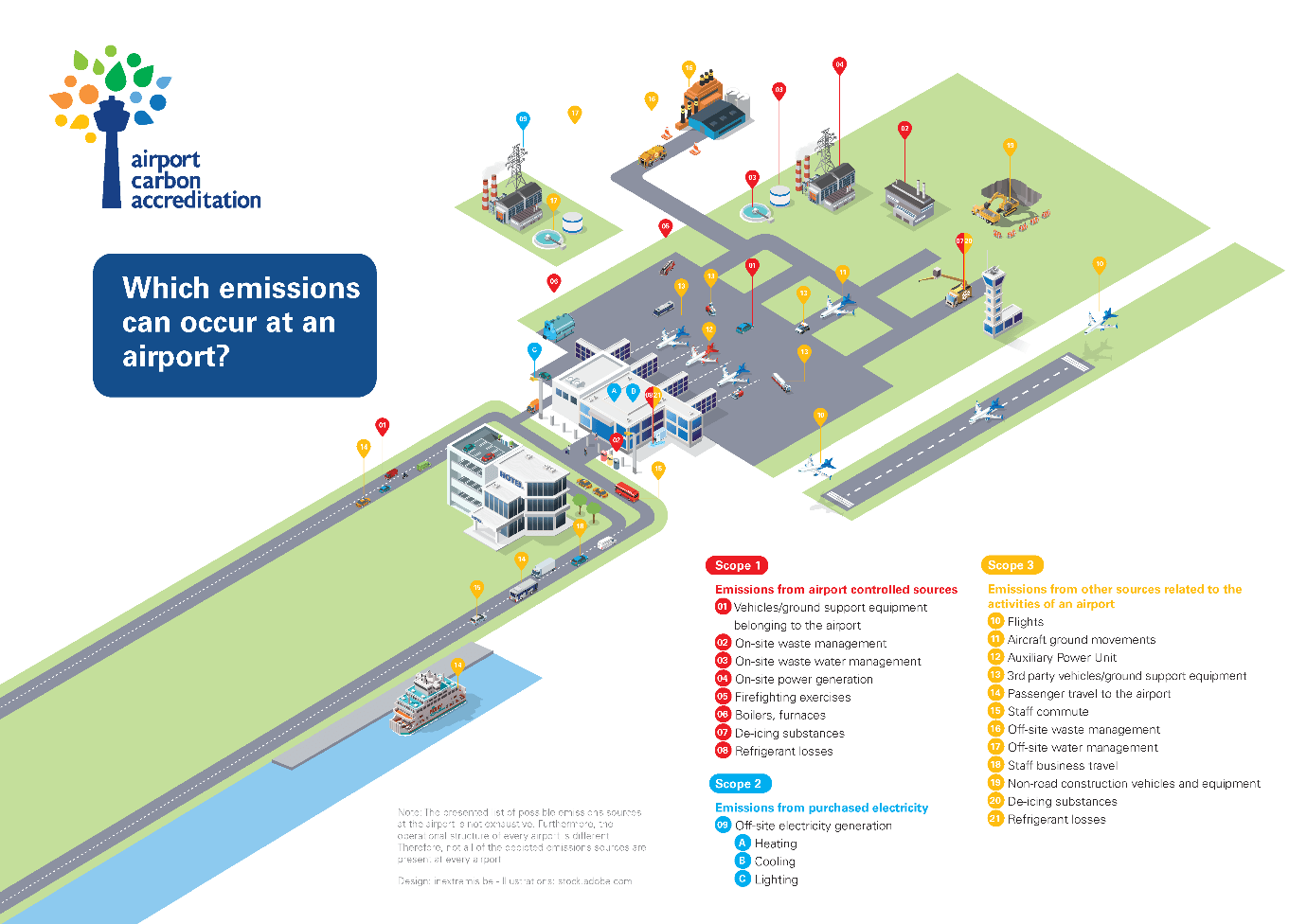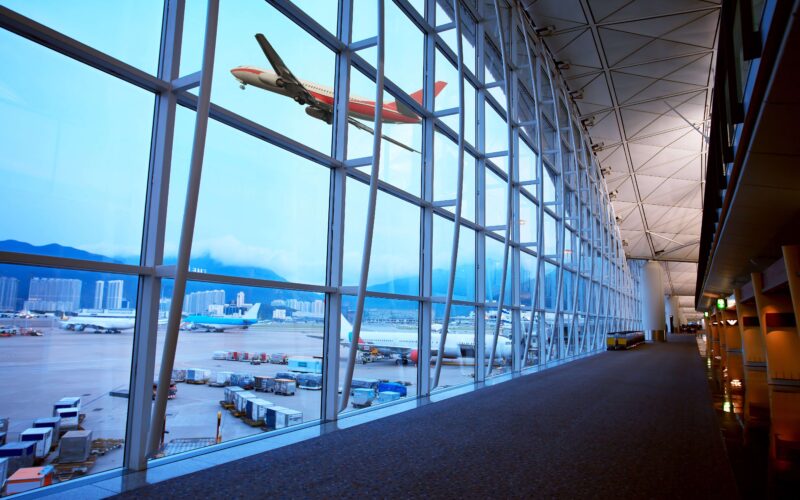Aviation’s impact on the environment is significant, meaning that the industry is often in the spotlight when it comes to climate change.
The global air transport sector has pledged to achieve net-zero carbon emissions by 2050 but to succeed it will require a coordinated effort by the entire industry, including manufacturers, airlines, air navigation providers, and airports.
While there has been a significant focus on ways to reduce aircraft emissions in recent years, as well as greater research into the development and deployment of sustainable aviation fuels (SAF), little has been said about the role of airports in tackling the climate crisis.
So, what actions are being taken by airports to reduce emissions, improve air quality and ensure a cleaner future for industry? AeroTime investigates.
Airports – big polluters?
Are airports big polluters? This question has been raised for some time.
According to an online airport tracker created by Overseas Development Institute (ODI), Transport and Environment (T&E) and the International Council on Clean Transportation (ICCT), the world’s five busiest airports emitted more CO2 than the entire country of Sweden in 2020.
Data from the airport tracker also revealed that London Heathrow (LHR), Los Angeles International Airport (LAX), Dubai International Airport (DXB), Beijing Capital Airport (PEK) and New York John F. Kennedy Airport (JFK) collectively emits a total of 72,4 million tons of CO2 emissions each year. The combined emissions from these airports are equal to the annual emissions from 18 coal plants.
While the airport emissions data looks intimidating, it is worth noting that it only shows CO2 released from aircraft departing from airports. Airports have little control over aircraft emissions and, typically, emissions owned or influenced by an airport are tied to other sources.
Where do airport emissions usually come from?
Not only does integrating sustainable technology into airport operations contribute to combatting negative impacts on the environment, but it can also increase efficiency, alongside lowering energy bills and reducing operating costs. However, just like cities, airports are complex places with a difficult infrastructure and a variety of different emission sources.
In an emailed statement to AeroTime, Alexandre de Joybert, the head of sustainability at Airports Council International (ACI) Europe, said that there are three scopes of potential emissions sources from an airport.
The first scope includes emissions from airport-controlled sources, the second involves emissions from purchased electricity, and the final scope includes emission from other sources related to the activities of an airport.
The emissions usually owned or influenced by an airport come from gasoline and fuel used by airport vehicles and ground support equipment (GSE), fossil fuels used to power an airport’s electricity, heating, cooling, and jet fuels used for auxiliary power units that power aircraft at airport gates as well as flights.
Joybert said: “While it’s impossible to generalise for all airports, typically the biggest source of emissions owned or influenced by an airport (Scope 1 & 2) is tied to energy consumption from lighting, heating and/or cooling of terminals and other buildings on the airport site.”
“Therefore, access to renewable energy either through the local electricity grid, or on-site generation is crucial for emissions reduction at an airport,” Joybert added.

What actions are being taken to achieve net-zero carbon emissions?
According to the ACI, for each airport the exact path to net-zero will vary, as the main source of carbon emissions will dictate the pace and character of the decarbonization process.
However, to reach net-zero emissions by 2050, airports would need to reduce emissions by switching to zero-carbon energy and fuel sources, reducing energy consumption through the design of new energy-efficient infrastructure, and by investing in low energy vehicles and equipment using electricity or renewable fuels.
While there is still a long way to go, airports have been making a number of changes in order to try and achieve net-zero carbon emissions and ensure a cleaner future for the industry.
Despite the massive losses incurred during the COVID-19 pandemic, airports across the globe have been investing in new technology and innovative ways to operate more sustainably.
AeroTime has asked several airport operators to share the progress they have made in trying to achieve this goal.
According to airport operator Airport Authority Hong Kong (AAHK), airfield vehicles and equipment have been replaced by electrified models since 2017, ‘alongside the expansion of the airport’s electric charging network. The AAHK also started a ground services equipment (GSE) pooling scheme for ramp handling agents with the aim of minimizing emissions from apron traffic and speeding up GSE electrification.
Regarding energy saving, AAHK transitioned to LED lighting in the passenger terminal buildings and the airfield. The Hong Kong airport authority has also implemented energy management solutions such as developing a system to control the passenger terminal’s air conditioning through accurate prediction based on big data.
Now, the AAHK expects to reduce 55% of its absolute emissions by 2035 and achieve net-zero carbon emissions by 2050 at Hong Kong International Airport (HKG).
Finavia, a company responsible for maintaining and developing 20 airports across Finland, told AeroTime that the company has operated all 20 airports carbon neutrally since 2019 “by reducing emissions and compensating the residual emissions by avoidance credits”.
To reduce CO2 emissions and become carbon neutral, Finavia said it has used 100% renewable diesel at all 20 Finavia airports in road-registered maintenance vehicles. Additionally, half of Finavia’s airports are heated with thermal plants run on renewable wood biomass. Finavia has also installed a total of 650 kWp solar power at Helsinki Airport. Wind power is used as a source of electricity, Finavia added.
However, there is still much progress to be made before the country’s airports can achieve net-zero carbon emissions.
“Achieving Net Zero Carbon is possible if all the fossil energy used can be switched to renewables,” Mikko Viinikainen, VP sustainability and environment at Finavia, told AeroTime.
Looking ahead, Finavia will gradually expand its use of renewable motor oil to all Finavia’s airports in an attempt to reach net zero carbon emissions in the future.
“We will source all district heating as renewable thermal energy at airports dependent on external power plants. In due course, Finavia will no longer use fossil energy at all,” Viinikainen explained.
Swedavia – a leader in fossil-free operations
Swedavia, a Swedish state-owned company, which owns and operates 10 of Sweden’s busiest airports, has been running operations of its airports entirely fossil-free since 2020, according to the Airports Council International (ACI).
Joybert said: “The airport operator is purchasing fully green electricity to power its terminals, and all vehicles owned by the company are fuelled by HVO – Hydrogenated Vegetable Oil – an emission-free alternative to regular diesel. In addition, the operator purchases Sustainable Aviation Fuel for all business travel of their staff.”
“Already now, at Stockholm Arlanda and Goteborg Airports – two busiest airports within their network – ground handlers and other third parties are incentivised financially to refuel with HVO to cut emissions from their operations as well,” Joybert explained.
Swedish airports are also trailblazers when it comes to supplying Sustainable Aviation Fuels (SAF) to their airline customers, as well as research into airport infrastructure required for the development of electric aircraft.

